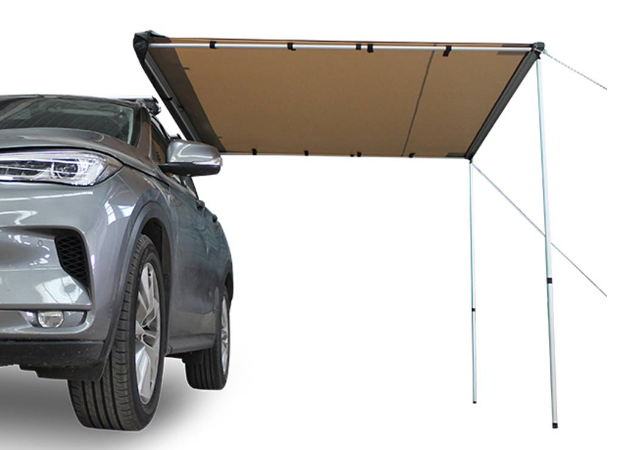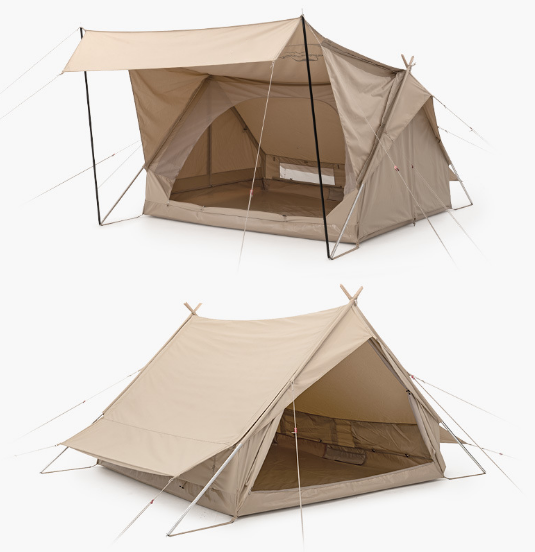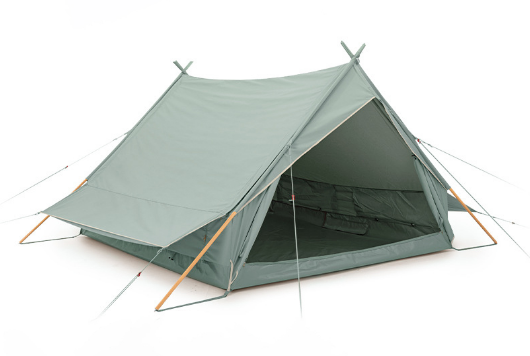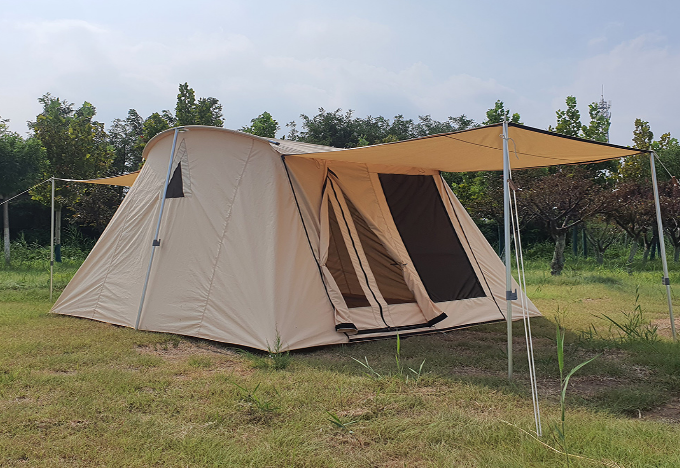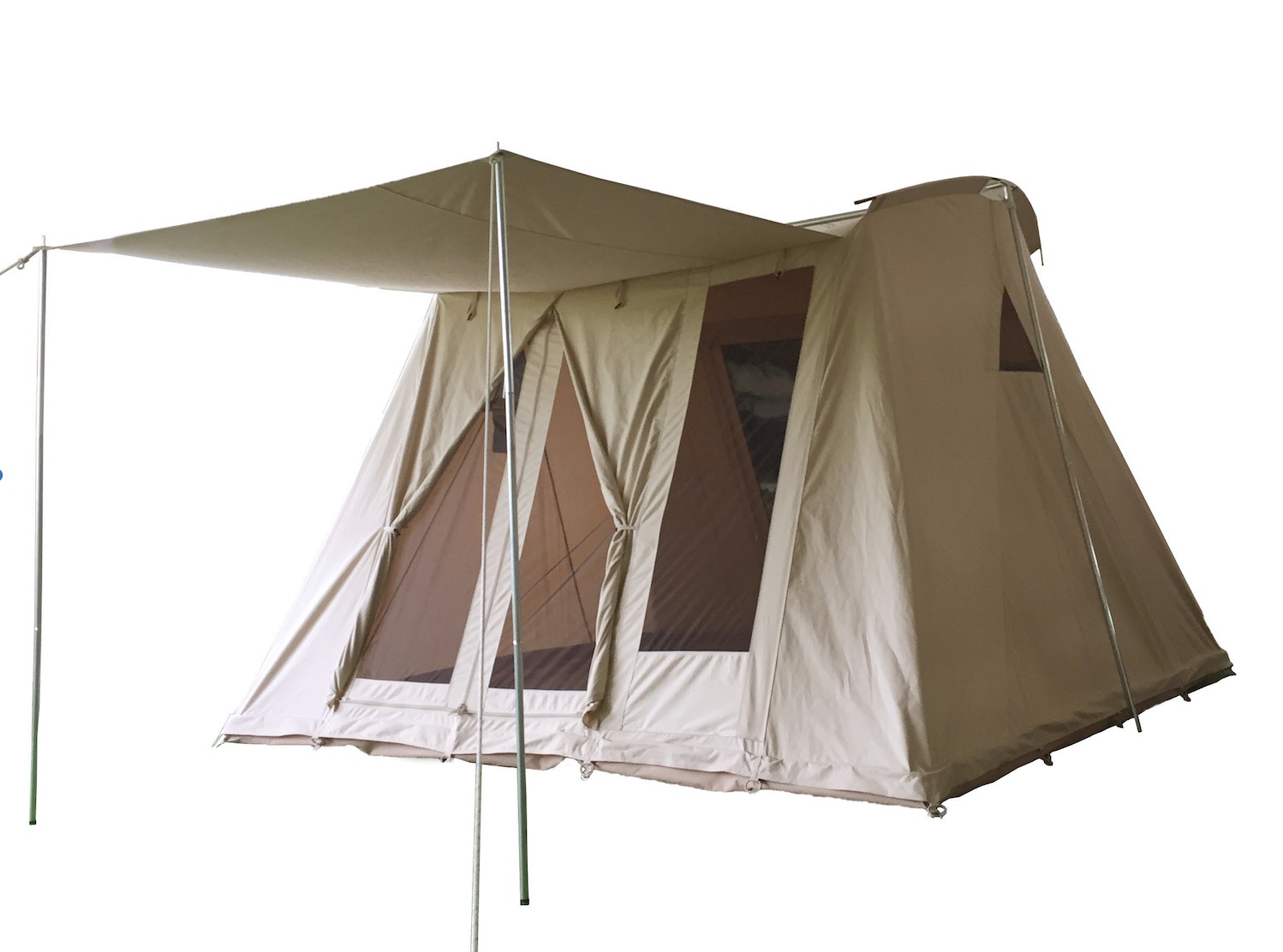An over-the-door canopy offers an excellent solution for seeking refuge from the elements during fishing or hunting road trips.
1. The enjoyment of car camping, beach driving, and off-roading is further heightened with additional shelter provided by a vehicle awning. Similar to an RV or sun porch awning, the retractable fly unfurls or folds away when not in use and can be deployed within minutes at your camp or picnic site. If you put a lot of miles on the road and break often to rest, cook, or just relax in the outdoors, a vehicle awning adds a whole new level of comfort, shelter, and privacy. Most vehicle awnings mount on the perimeter of a roof-rack system so that they remain aerodynamic during travel.
2. However, different models offer varying degrees of coverage, ranging from 90 to 270 degrees. Some models also provide the option to attach one or more side shelters to partially or fully enclose the awning, providing additional protection against the elements.
3. Some awning materials are marketed as waterproof, while others are not. If you reside in an arid environment like the desert southwest, where shade is prioritized over rain protection, the waterproof feature may be less crucial. In case of unexpected rainstorms, you can angle a non-waterproof awning downward to facilitate drainage and reduce the risk of leakage.
Vehicle awnings have become a popular accessory for outdoor enthusiasts, offering shade and shelter during camping trips, picnics, and outdoor events. Whether you're an avid camper or just someone who enjoys spending time outdoors, investing in a vehicle awning can greatly enhance your outdoor experience. However, before making a purchase, there are several factors to consider to ensure you choose the right awning for your needs. Here are other important things to to keep in mind:
1. Size and Compatibility
One of the first things to consider when buying a vehicle awning is its size and compatibility with your vehicle. Awnings come in various sizes, ranging from small awnings suitable for compact cars to larger ones designed for trucks, SUVs, and RVs. Before making a decision, measure the space available on your vehicle where you intend to mount the awning. Take into account the height, width, and length of the area to determine the maximum size of the awning that will fit comfortably.
Additionally, consider the compatibility of the awning with your vehicle's roof rack or mounting system. Some awnings are designed to be easily attached to roof racks or roof bars using brackets or clamps, while others may require specific mounting hardware or adapters. Ensure that the awning you choose is compatible with your vehicle's roof configuration to avoid any installation issues or compatibility problems.
2. Material and Durability
The material and construction of the car awning are crucial factors to consider, especially if you plan to use it frequently in various weather conditions. Awnings are typically made from durable fabrics such as polyester, canvas, or ripstop nylon, which are designed to withstand exposure to sunlight, wind, rain, and other outdoor elements. When evaluating awnings, pay attention to the quality and thickness of the fabric, as well as any additional coatings or treatments that enhance its durability and weather resistance.
Another aspect to consider is the frame material of the awning. Most awnings feature lightweight yet sturdy frames made from aluminum or steel, which provide stability and support when the awning is deployed. Look for awnings with rust-resistant frames and components to ensure long-lasting performance, particularly if you plan to use the awning in coastal or humid environments where corrosion is a concern.
3. Ease of Use and Setup
Ease of use and setup are essential considerations, especially if you frequently travel solo or prefer hassle-free outdoor equipment. Look for awnings that are designed for quick and easy deployment, with features such as telescoping legs, self-locking mechanisms, and intuitive adjustment options. Some awnings come with integrated poles or support arms that can be easily extended and secured without the need for additional tools or accessories.
Additionally, consider the overall design and functionality of the awning, including the ease of adjusting the angle and height to accommodate different weather conditions and preferences. Look for awnings with user-friendly features such as roll-up or retractable mechanisms, zip-out panels for ventilation and airflow, and built-in accessories like LED lighting or mosquito nets.
Conclusion
Roof awnings are not one-size-fits-all. It's essential to review the manufacturer's recommendations to ascertain if the awning you're considering will fit your vehicle properly. Additionally, consider whether separate mounting hardware needs to be purchased. Many products in the roof-rack and storage category may require additional components that are sold separately.
